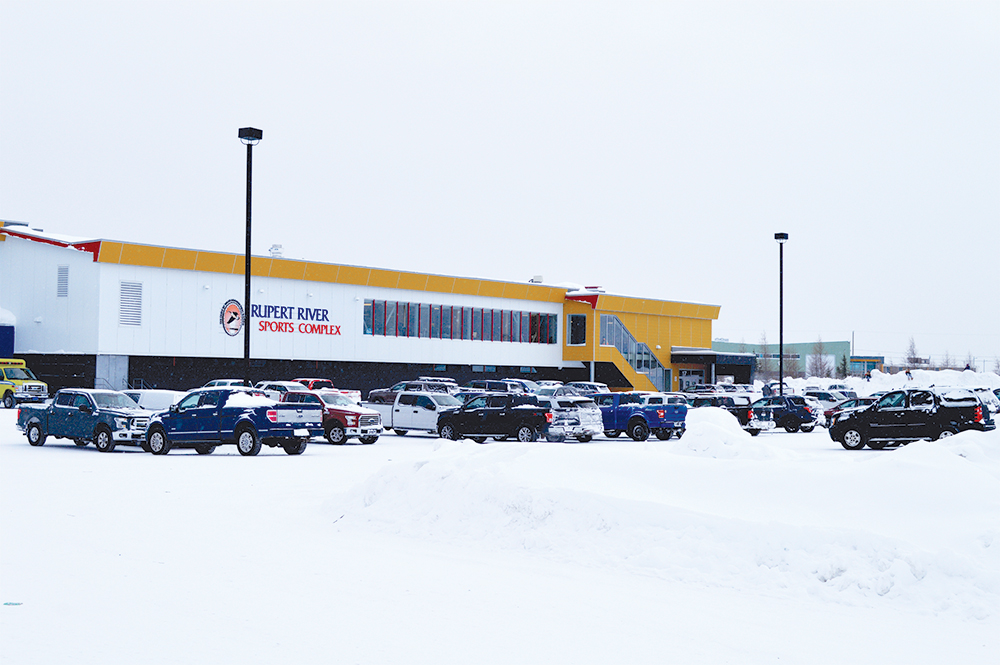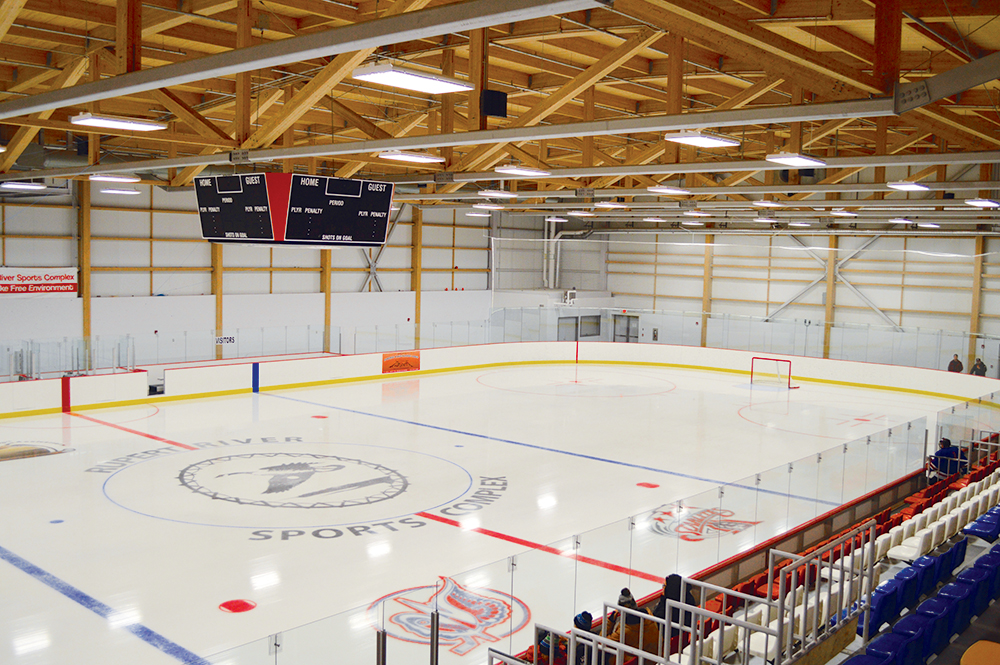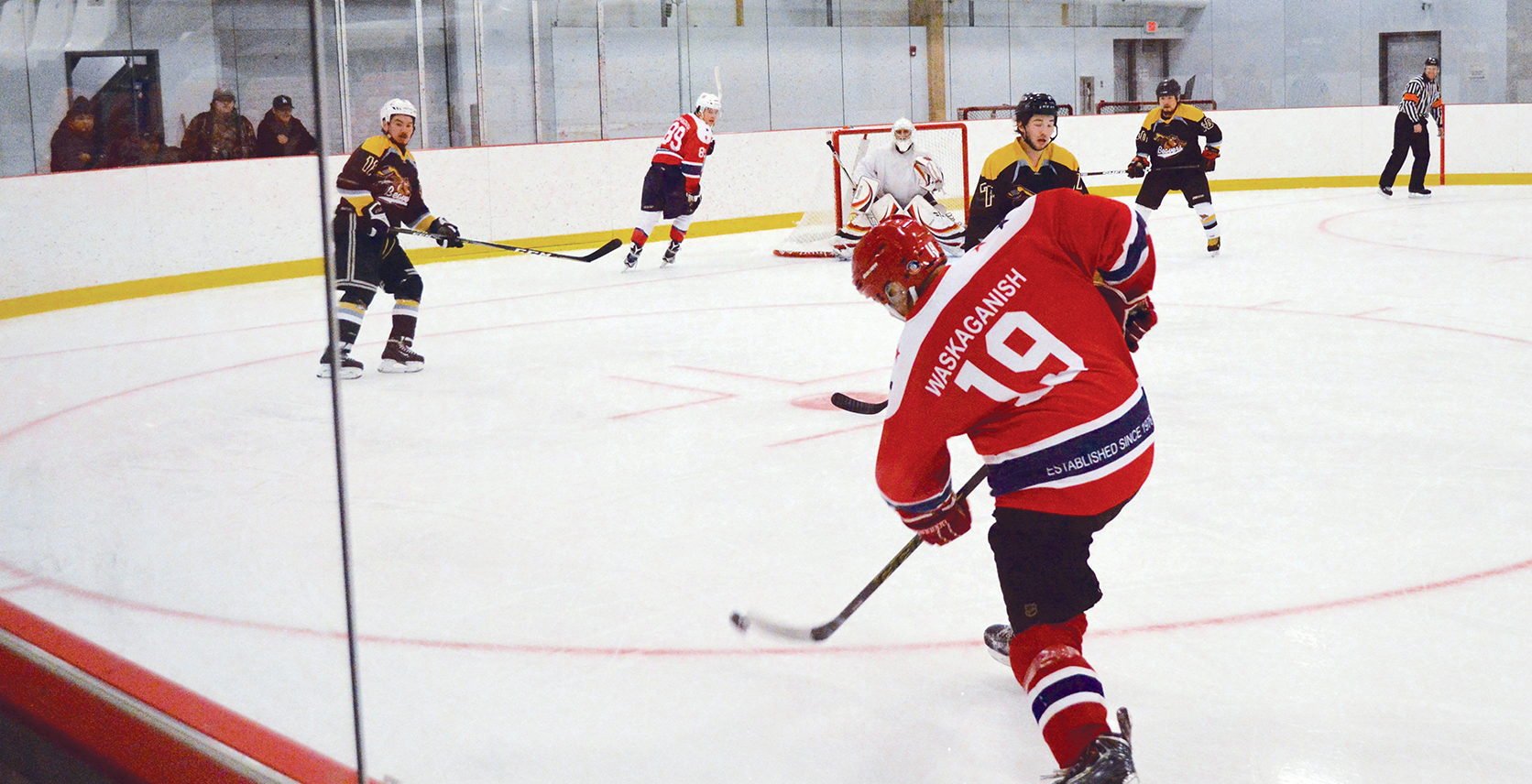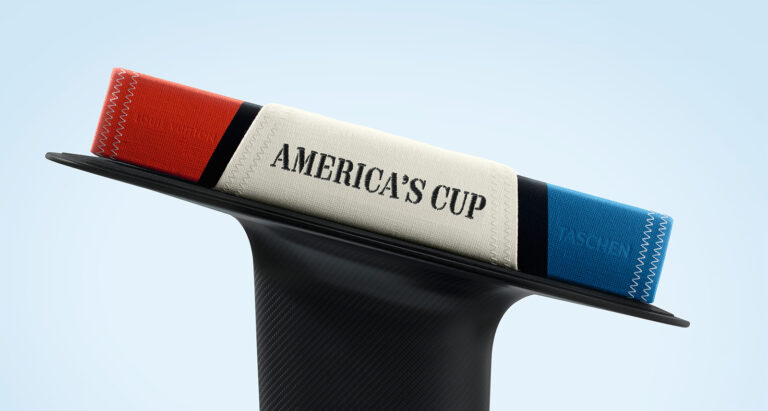On the way up the James Bay Highway, we passed a wolf, two lynx, and a partridge on a snowbank. Shot the partridge.
It was a Thursday in January. We were en route to the Waskaganish hockey tournament, on the shores of James Bay, in Quebec’s Cree First Nation territory. For decades, the James Bay Cree have had their own unique hockey circuit, hidden away from the TV cameras, in the great boreal forest to the north of most of us. It’s an over-900-km drive almost directly north of my home near Ottawa. That’s equivalent to driving to Virginia — but up. The truck we’re in belongs to Adam Chalifoux, a ten-year veteran goalie on the circuit. When he spots the partridge, a speck on the white expanse ahead, he pulls over and grabs his shotgun. It will be a treat to cook for his fiancée when we return.
Welcome to Eeyou Istchee — Cree territory.
Cree hockey is a big deal, and big money. Tournaments move from town to town each week, and teams from each of the Cree communities follow them. The tournaments are the biggest things to hit the isolated villages all winter, a moveable family reunion. Winning teams pocket prizes as high as $30,000, often doled out in hundreds in locker room celebrations. (Prizes come from team registration, gate receipts, and sponsorship.) There’s often a feast, with elders cooking traditional foods: beaver, ptarmigan, goose. The most prestigious of the tournaments, in Val-d’Or, is often called the biggest annual gathering of Cree Nation.
For the James Bay Cree, the game has become a staple of community life. Youth enrollment is enormous, and junior development and training improve by the year. The best of them will be competing one day for spots on these Class A senior teams.

To put things into perspective, Canada produces roughly one NHL player per 80,000 residents. There are just 16,000 Cree in Eeyou Istchee. While they can look up to Cree NHL star and Maurice Richard Award-winner Jonathan Cheechoo, it’s unrealistic to imagine waves of Cree coming to the NHL. But they have their own circuit here. As with the CFL, it doesn’t matter that it’s not the pinnacle of the sport — the fact that it’s here and thriving is enough.
My driver Chalifoux is Algonquin. He plays as one of the designated ‘imports’ each team is allowed. He’s a hockey mercenary, playing with a different team every week, often for guaranteed cash and a cut of any winnings. Chalifoux left Quebec’s Kitigan Zibi reserve at 13, on a journey to the NHL cut short by knee problems. Now 29, living in Aylmer, QC, the easygoing father of two is a roofer during the summer. Come hockey season, his fiancée cries every weekend, fearing what could happen on the 16-hour drives he takes in glacial conditions, hundreds of kilometres away from cell reception. But these tournaments are his meal ticket for the winter. This week, he’s signed on with the hometown Waskaganish Renegades.
The other passenger riding with us is Alex Cooper, a star Cree forward and fixture on the circuit for the past six years. Truck talk covers which players are coming with which teams, plus highlights from past tournaments, like that time the highway was blocked by a massive herd of caribou. Cooper tells me that it gets so cold sometimes, the arena heating can’t keep up and the players on the bench get instant ice beards from their sweat. Still, it could be even colder. Just a few decades ago, this circuit was outdoors — as in Richard Wagamese’s iconic novel Indian Horse.
Chalifoux talks about tribal rivalry, the weight of it felt in the rare match-ups between Algonquin and Cree teams. But, he adds, “The biggest rivalry is within the Cree communities. All the drama. When there’s good beef going on on Facebook, you know it’s gonna be a good game.”
•••
Waskaganish has a unique place in Canada’s history as a key location in two era-defining moments. Once called Rupert House, it was the original Hudson’s Bay Company outpost, established in 1668, before Halifax or Toronto. The HBC domain, Rupert’s Land, covered almost one third of modern Canada. With its hunger for beaver pelts, the HBC was instrumental in the exploration and colonization of Canada, and it all started here.
Fast-forward three hundred years to the 1970s, and Quebec’s plan to build the world’s biggest hydroelectric project at James Bay. Only no one asked the people who lived off the rivers that were to be diverted, and off the land that was to be flooded. Billy Diamond, a 21-year-old Waskaganish chief, brought the disconnected bands together and fought back: in courts, in the media, at international forums, at the provincial and federal levels. The battle ended with the project altered to mitigate the environmental damage, a unified Cree nation, and the momentous James Bay and Northern Quebec Agreement: Canada’s first modern, comprehensive First Nations treaty.
Eeyou Istchee was born then. Just as Waskaganish led the way in the development of Canada, it’s led the way in First Nations self-governance. There were significant costs to the Agreement, but the connection and rights to the land, to hunting and trapping, have been protected. And now the hockey season helps bring the distant communities together.

The sun rises and sets during our drive, but we finally arrive in time for Chalifoux’s evening game. The arena is a beauty: brand new, seating 1,000 fans under beautiful wooden beams and ceiling. A clean, stylish cafeteria runs almost the length of the arena, floor-length glass separating it from the catwalk at the top of the stands.
Between all the hockey and broomball divisions, roughly 180 Waskaganish residents are competing — from a population of 3,000. Well over half the town will pass through the arena this weekend. And this is while a part of the population is out hunting in bush camp for all or part of the winter.
In the Renegades’ locker room, as in the stands, Cree is the language of banter and catching up, with snippets of English here and there, especially for hockey clichés: “Control the puck, boys! Control the puck and you control the game!”
The players’ socks and girdles are in tatters, the jerseys mismatched from different years. But they are stars, here. Children wait over the player entrances for their favourites. From the first shift, the skill and excitement of Cree hockey is evident. Many have played at Junior A level, a few have played Major Junior. The teams have grown up playing together. They know each other’s tendencies, and can execute lightning-quick cross-rink passes knowing exactly when their linemates will burst.
“From a population of 3,000, roughly 180 Waskaganish residents are competing. Well over half the town will pass through the arena this weekend.”
I begin to hear the cries of “Suukh! Suukh!,” Cree for “Go! Go!” In goal, Chalifoux is conservative — he rarely charges the puck or strays far from net. He’s still a bit of a showboater, with no-look passes through his legs to defensemen behind him, and scoop-passes 20 feet in the air to his forwards at the red line. The Renegades lose the opener 4-2 to the hometown rivals and reigning Val D’Or champs, the Waskaganish Wings.
The riverfront hotel fills up for the tournament, but most of the players and fans are, like us, billeted with a family down the street from the arena. The home, like most in Waskaganish, is an attractive, modern bungalow. Our host tells us his uncle still spends 10 months a year out on his trapline — his family’s designated hunting grounds, passed down from generation to generation. A hunter (and hockey player) himself, he and his wife treat us to moose-meat lasagna.
•••
Friday, I meet up with Charles Hester, the band’s director of culture and recreation. The Hesters are Waskaganish’s First Family of hockey. Between the two divisions, five of his sons, two brothers, and Charles himself are all lacing up. Legend has it that Charles’s great-grandfather brought hockey to Waskaganish, returning home with skates after a childhood trip south for medical treatment.
Hester gives me a tour of the town and band council offices. There are few trees in the village, and fewer buildings over two storeys. Snowmobile trails wind between the newly constructed houses. The street plows leave a crust of packed snow over the asphalt for the winter. White, everywhere — the land secretly meeting the Rupert River and James Bay under cover of snow.

“Without the land,” Hester says, “our culture wouldn’t even exist. And we still have our base of land to teach our culture. I know that some communities are not as lucky. There are many tribes that have lost their language, that don’t practice their culture. They don’t have land. We’re lucky, because we’re so isolated. Because of that isolation, we’re still the dominant population.”
Hester says of the James Bay Agreement, “There were people who called the Cree people sellouts. It was not our idea. We lost in court, and we negotiated. Now we run our own school boards, we run our own healthcare systems, we’ve got helicopters and planes in the air, we run our own airline, we have a say in what happens in the Cree territory.”
Hester goes on to describe programs designed to teach for kids and adults the traditional ways. “We take them out on the trapline. They learn how to trap beavers and other animals, how to prepare them, what parts of the beaver to use for what purposes, because there’s medicine in there, food, tools you can use, clothing you can make.”
Indeed, when a southern Mohawk band wanted help controlling their beaver population, they called in a group of Cree hunters to teach the skills they’d lost. Wandering the village, I had met a teacher who specializes in teaching outdoor skills and culture, taking groups of kids out for two weeks every spring. I had also met a group in the community teepee preparing a feast for a kid’s birthday party: beaver hung by the woodstove while goose was chopped up on the table.
I ask if the Cree consider themselves Canadian. “I think most people consider themselves Canadian, and that’s evident when there’s a hockey game and everyone cheers for Canada,” says Hester. “At the same time, people feel our relationship to Canada as nation to nation. When people ask me what I am, I’m Eeyou.”
He talks about the special importance of hockey as a unifying force for the James Bay Cree, given their far-flung communities.
“The hockey brings people together every weekend,” he says. “It’s important to keep the fellowship between the communities. When you see the people from the different communities, you have the sense of being one nation.”
When I ask if the hockey schedule has become a part of the seasonal cycle, like the hunting seasons, Hester laughs. “People in Cree nation have [the tournaments] written down on their calendar. It’s Val D’Or in December, then all the rest. But the one thing that the tournaments can never compete with is the goose hunt. Even the school is closed for two weeks [for that]. Once the Cree hunter gets goose fever, he’s gone.”
•••
Friday night, the arena fills near capacity for the official opening ceremonies. The featured game is between the Wings and the first-ever Inuit team in the tournament, the Inukjuak Blackhawks. While the teams stand in lines on the ice, there is a service for four hunters lost in a boating accident that autumn — one of whom was a longtime coach of the Wings. Family members stand in a circle at centre ice while memorial banners are raised. The players raise their sticks in salute, and there is a moment of silence. “Oh, Canada” is sung in Inuktitut in honour of the guests.

All of the 12-year-olds of Waskaganish seem to be here, boys and girls grouping on opposite sides of the glass cafeteria wall. The reigning style trends are fringed and beaded gloves and mitts of moose-hide or leather, embroidered with NHL team logos — or the design of the Waskaganish Wings.
This is Cree hockey. Saturday morning, Chalifoux goes hunting with the Wings’ goalie, his greatest tournament rival. Both have games later in the day. Fittingly, it’s Hockey Night in Canada on CBC, but there are no cameras here. I’m at the arena till 2 a.m.
Sunday, the temperature drops below -30. The crowd gets the title matchup they wanted, the hometown Wings vs. the Renegades. The Wings take control early, and never let up. They’re a well-oiled machine. The forwards cut into their turns perfectly in unison, like Snowbird jets. Kids cheer on one of Hester’s sons, a Wings star: “Let’s go, Brett! Let’s go!”
The Wings take the championship, the $20,000 prize, and the bragging rights. The loss stings for the Renegades, but they’ve won $10,000 themselves, and Chalifoux will get a little bonus.
Hockey can still be a binding, unifying force in Canada. We saw that recently when the country came together to mourn after the Humboldt crash — a tragedy that felt particularly overwhelming given its connection to our favourite pastime. We saw it again, in a different way, with the bandwagon that formed to support the Jets in last year’s playoff run. The Cree have picked up hockey as their own, and it is tying their nation together just as it has tied ours. As the Cree progress in self-governance, in cutting certain ties with Canada, hockey will be one of the things we share.
It’s an all-night drive back. When the sun comes up, Eeyou Istchee is far behind. A kingdom of ice in the northern woods. It’s all eyes on the road ahead now. And these guys will all be meeting up in Mistissini next weekend to do it again.



